Asif M Basit, Curator, Ahmadiyya Archive and Research Centre
Some question why is it that we witness a huge surge in the opposition of the Ahmadiyya Muslim Jamaat. Those born and brought up in the age of social media are justified in asking this innocent question. Hence, it is essential that we go through the annals of history and see how the media has always been a tool for false propaganda against the Ahmadiyya Muslim Jamaat and how this opposition has evolved with the advancement in communication technology.
“And when books shall be printed”
We often present this Quranic verse as one that sets the timeframe of the advent of the Promised Messiah, Hazrat Mirza Ghulam Ahmadas and it is very apt in its purpose. However, what must be kept in mind is that the invention of the printing press was not only to serve the mission of the Promised Messiahas, but also to provide for his opponents to spew their jealousies and grudges.
So, let’s go back in time and see how the media has always been used by those who wish to hinder the divine mission – from the printing press to this age of cyber communication.
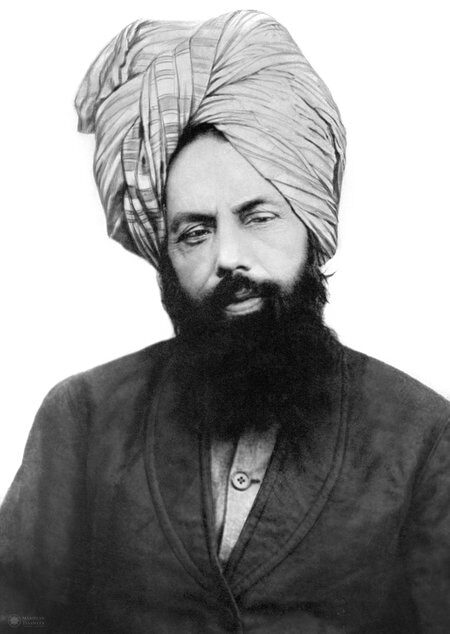
Next-to-none resources
The Promised Messiahas was appointed by Allah in India where Islam, Christianity and Hinduism were in direct conflict with each other. The press played a vital role in this inflammatory discourse as munazira (face-to-face debate) had failed in bringing about positive results. The press, which has proven successful in shaping modern Europe, was now being used by Indian religions for proselytising their faiths, albeit by way of exchanging inflammatory material.
Where one cannot deny the good results, the negativity that overwhelmed the religious climate of India cannot be denied either.
Before we move on, readers must be reminded that the Promised Messiahas was alone and all other religions had turned bitterly against him. His only rock was the God Who had appointed him for the divine task.
When the Promised Messiahas set out on his mission to call the world to Islam through his revolutionary jihad of the pen, he had nothing but the pen to carve his way through. He did, however, have the divine promise of “Alaisallahu bikafin abdahu” – “Is Allah not sufficient for His servant?” – and it was his reliance on these words of Allah that he started writing articles in the defence of Islam in esteemed Urdu newspapers of his time.
Then came his claims to be the Messiah and Mahdi, and then followed the acceptance from circles ranging from the intelligentsia in urban settings to the common people of rural and suburban communities.
But his message and its acceptance invited a very strong and bitter rejection by all adherents of all religions, including his coreligionists – one article would bring back dozens written in rejection; one book, a dozen books and one pamphlet would see many more written against it and much widely circulated. We must remember that this war stood as one against thousands.
Newspapers against Hazrat Mirza Ghulam Ahmad, the Promised Messiahas
Newspapers owned and edited by followers of other religions always played a huge role in opposing anything said or written by him. This ratio of one to hundreds has been there since his time and can still be seen today. Just that the convenience of liking, sharing, forwarding a single post on Social Media has turned the opponents’ side seem in millions.
The Ja’far Zattali
Muhammad Bakhsh, a pupil of the famous Ahl-e-Hadith leader Muhammad Hussain Batalvi, started his own newspaper named Ja’far Zattali after his pseudonym, which he devoted for ridicule and mockery of the Promised Messiahas and his claims. He wouldn’t stop short of hurling abuse, using vile language and concocting stories not only against the Promised Messiahas but also his family members.
While the language used was itself unbearable by any decent reader, the concocted stories would deeply wound sentiments.
In the challenging times when the plague was rampant and the Promised Messiahas was devoted to calling his countrymen to Allah by way of repentance, Ja’far Zattali published a false story titled “Afsosnak hadisa” (A sad incident), stating that Hazrat Mirza Ghulam Ahmad, the Promised Messiahas had passed away.
This sent a wave of shock all over the country and unrest shook members of the Community who lived out of Qadian and had no means to verify the news. Al Hakam had to publish a special edition on 3 April 1898, to deny the news and to inform Ahmadis and other well-wishers that the Promised Messiahas was alive and well.
But this never stopped the tabloid from doing so and false stories continued to appear in this paper for many years.
The Nur Afshan
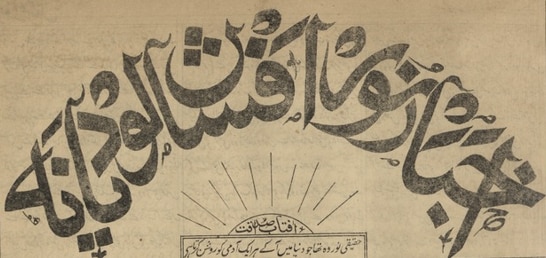
This newspaper was a vernacular organ of the Christian missionary activity in the Indian subcontinent. Its editors, writers and its columns remained devoted to the opposition of the Promised Messiahas and his claims, his writings and his prophecies. It seemed as if the paper got its sponsorship from the opposition and spiteful attacks on the Promised Messiahas.
The Promised Messiahas stated on one occasion:
“Those who have read the Nur Afshan of 10 May 1888 would know that its editor had published my letter about a prophecy [Muhammadi Begum] and had left no vile word and uncivil remark that could be said against me. Knowing the morals of Christian missionaries and how they always react with denial and slander, one should no longer be surprised or hurt; but what I want to highlight here is that the revealed prophecy they mocked as my vicious plan and a human concoction, has it not proved to be divine? Has it now proven a humanly fabrication, or has God Almighty, Who stands for honesty, shown its truthfulness?” (Aina-i-Kamalat-i-Islam, p. 279)
Every element of the Promised Messiah’sas mission would prove true, but this newspaper continued in its mockery all along.
The Shubh Chintak
The name of this newspaper, literally and ironically, meant “good ideas”, but it busied itself in only saying vile words about the Promised Messiahas. All news stories about the Promised Messiahas could not be classified as news, but as bitter propaganda about him. It thrived on baseless and slandering stories about the Promised Messiahas that worked as its breadwinner for the entire time of its existence.
The Promised Messiahas once spoke about this newspaper as such:
“The Arya of Qadian started a newspaper from Qadian, the Shubh Chintak, with the sole purpose of hurting me through slander […] Whoever has seen even some of its issues can testify that this newspaper was all about slander and libel.” (Ruhani Khazain, V. 22, p. 590)
The Nazim al-Hind
When Husseyn Kami, the Ottoman consul, visited the Promised Messiahas and could not succeed in persuading him to help the Ottomans in their political motives, he resorted to hurling abuse against him. For this, the Nazim al-Hind provided him with its platform to use it the way he liked. The newspaper published his lengthy and windy letters that carried only abusive language for the Promised Messiahas. The editor would add his own analysis and remarks to make the story more sensational. This joint venture of the Ottoman consul and the Muslim editor of a newspaper shows how anyone opposing the Ahmadiyya Muslim Jamaat has always been welcome by our opponents regardless of how true or false their narrative is.
The Ahl-i-Hadis
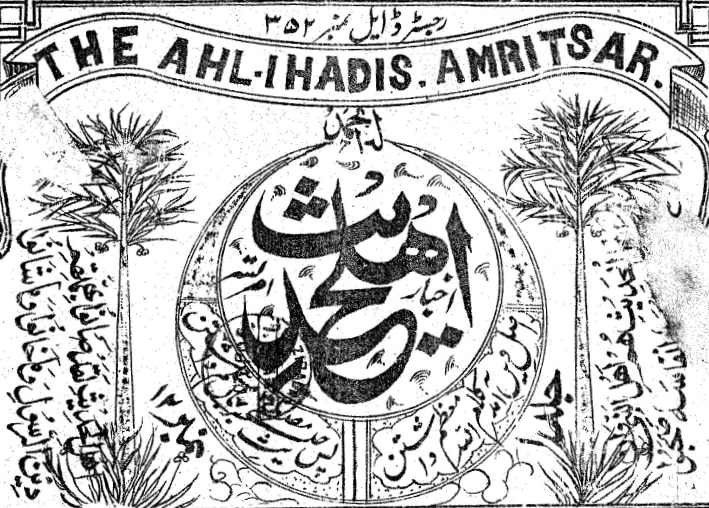
As the name suggests, this newspaper was an organ of the Ahl-e-Hadith of India. The editor, Sanaullah Amritsari, who remained a staunch opponent of Ahmadiyyat, would fill pages and pages to mock and ridicule every single word uttered by the Promised Messiahas. This remained a regular feature of his newspaper with a dedicated column titled “Mirza Series”, later published by the editor in book form.
The Punjab Samachar
When the prophecy about Pandit Lekhram became manifest through his dreadful death, this newspaper continuously claimed that the murder was plotted by the Promised Messiahas. The editor insisted that the police investigate the Promised Messiahas as the perpetrator and that they would find clues to the murder of Lekhram.
The determination that the Punjab Samachar exhibited in bringing about a lawsuit against the Promised Messiahas is proof of how our opponents have always used the media to put forward their false claims against the Jamaat and then adamantly insist upon them to the extent that they start to seem established and proven facts.
The police succumbed to the pressure and obtained to search the house of the Promised Messiahas and its vicinity. Finding nothing to support the false claims, the police left, testifying to the innocence of the Promised Messiahas and laying bare the evil schemes of his slanderers.
The Rahbar-i-Hind
This paper too was part of the pressure group that wanted Hazrat Mirza Ghulam Ahmad, the Promised Messiahas to be seen as a suspect in the murder of Lekhram. It provides another example of hatching a wishful claim, strengthening it through persistent repetition and then making it seem like fact and not a mere statement.
The Civil & Military Gazette (CMG)
Although CMG maintained a neutral and unbiased position, it would also succumb to the surge of persecution against the Promised Messiahas. A letter-to-the-editor here, or the odd opinion-based piece there, and the slander would seep through this otherwise “civil” paper.
The Promised Messiahas mentioned one such occasion thus:
“I have read in the Civil and Military Gazette that it complains to the British government, based on its assumption, that I am an enemy of this blessed government and that I hold malicious intentions […]” (Translated from Arabic, Maktub-i-Ahmad, Ruhani Khazain Vo. 11, p. 283)
The Arab Press
The Al-Manar, published from Cairo, would propagate that Hazrat Mirza Ghulam Ahmadas, the Promised Messiah was such an ardent lover of the British government that he had decreed not to wage jihad against them.
Readers can see what all this propaganda adds up to. One newspaper tells the government that Hazrat Mirza Ghulam Ahmad, the Promised Messiahas is their enemy, the other insists on proving him their blind admirer.
Al-Manar is only an example of how the Arab press contributed to the libellous war against the Promised Messiahas. They knew they could easily influence Muslims all over the world for the mere reason of being an Arabic language newspaper, and they tried their best.
Another such example is the mockery of the Promised Messiah’s books in Arabic, referring to which he once mentioned with sorrow:
“So, you claim that my writing is full of mistakes and blunders, yet you have not supported your claims with works of established writers and linguists. I present to God your matter of unjust fabrication, for you have done this injustice without any reason and without any enmity between us […]” (Translated from Arabic, Al-Huda wa al-Tabsira Limann yaraa, Ruhani Khazain Vol. 18, p. 256)
Influenced by the Arabic origin of this newspaper, the Indian press took it as incumbent to pick up anything it wrote and republish it to fuel their libellous campaign against the Promised Messiahas.
The Promised Messiahas mentioned this newspaper in the following words:
“They [opponents] saw the claims of Al-Manar as the best weapon and copied them in Indian newspapers, spicing them up with words that the clean-hearted and pure-natured cannot even bear to listen. They have wounded my heart like a worst enemy, but they walk with such pride as if they have been invested with precious vestments.” (ibid)
The Western Media
The message of the Promised Messiahas had reached the Western world during his lifetime. Newspapers would cover his prophecies and claims, often with a hint of resentment – particularly mocking his claim about the death of their God, Jesus Christ.

Why the Western press needs mention here is because we can identify a peculiar pattern in their propaganda against the Promised Messiahas – a pattern that persists to this day. The space of this article does not allow details, so we present just one example here and move on.
The Church Mission Society (CMS), through their journal Church Missionary Gleaner, would often publish mockery and ridicule against the Promised Messiahas. In 1899, they published a story where a pamphlet by the Promised Messiahas on the surge of the plague and its divinely prescribed cure, was ruthlessly criticised and mocked.
The CMS then sent their story, along with the pamphlet, to British newspapers and incited them to publish similar stories. Many tabloids picked up the story and followed suit. For instance, the North Wales Chronicle published the story where the actual prophecy and the cure were mentioned briefly with reference to the Church Mission Gleaner, and then switched to mockery. Starting off with “The Church Mission Society has sent us […]”, it ended with the following:
“Ghulam Ahmad is a heretical Mohammedan leader who held a public controversy in 1893 at Jandiala with Mr Athim and Dr Henry Martyn Clark, Church Missionary Society, and was so emphatically worsted that he even neglected to claim the victory.” (The North Wales Chronicle, 25 February 1899)

It is quite clear from the above that a controversy stemming from a difference of belief was passed on to the press to make the best (or worst) use of it. The media, eager to sell anything sensational, whether true or false, simply jumped on the bandwagon, making a mountain out of a molehill. Where the plague should have remained the central idea of the story, the yellow shades of cheap journalism led newspapers to mock a six-year-old story of a debate with Christian missionaries.
The same pattern in the anti-Ahmadiyya propaganda machinery can be observed today: A person, belonging to any faith, or no faith, gets up and makes a slanderous claim against the Ahmadiyya Jamaat; all media platforms, belonging to any faith or no faith, get up and publish such claims as to the most important story under sensational headlines.
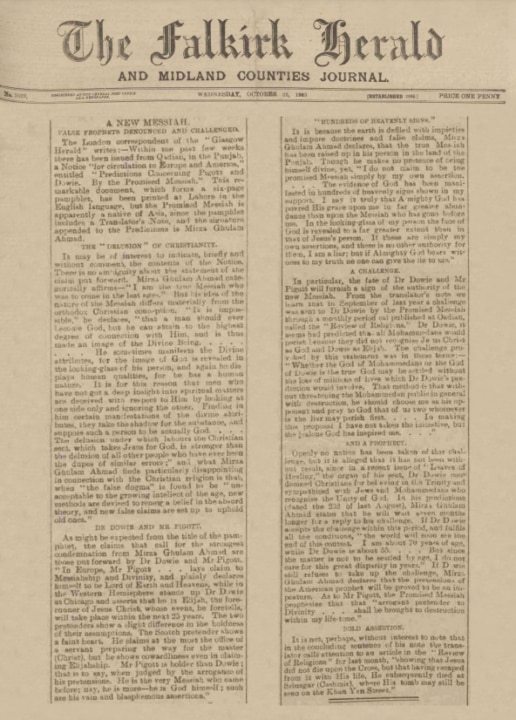
Anti-Ahmadiyya propaganda in the 20th century
With technological advancement, media platforms underwent an incredible transformation. The Jamaat saw new media platforms coming their way to use in the propagation of Islam; the opponents used the same for their vicious schemes to hinder this noble cause.
With newspapers becoming easily accessible through the advancement in postal services, yellow journalism crept in, albeit in an even worse shape. The Ahmadiyya Jamaat, like anything and anybody, became a target of this venomous python that curls and wraps around facts to twist and break them into sensational stories. Tabloids aside, even seemingly esteemed newspapers could not resist this heat and would give in when it suited their commercial interests.
For instance, The Tribune, Lahore (a flagbearer of Hindu and Indian National Congress’ agenda), published false news that “Mirza Bashiruddin Mahmud Ahmad, Head of the Ahmadiyya Community passes away”. (The Tribune, Lahore, 3 June, 1930)
The newspaper spread across the country, and so did a wave of unrest and disturbance in Ahmadis and moderate non-Ahmadis alike. Readers ought to be reminded here that Hazrat Khalifatul Masih IIra was seen by the educated and moderate-minded circles of Indian Muslims as an advocate of their rights. It was quite natural for the Indian Muslims, except the opponents, of course, to be worried and send telegraphic messages to Qadian to confirm the news. Many caught trains and coaches, and many walked to make their way to Qadian to confirm that the news was false and that Huzoorra was safe and unharmed.
Historically, this is how the opponents of the Jamaat have used false stories to satisfy their jealousy and wishful thoughts, although for a very short span of time. It is, however, satisfying to see that such attempts have always been short-lived.
In the time of Hazrat Khalifatul Masih IIIrh, the tabloid press once published a letter falsely associated with him and tried to create unrest.
Here, we must admit, we lose count. Thousands of fabricated stories kept cropping up in the tabloid and even mainstream media; thousands of times they were proven false and baseless; thousands of times they tried again. But we all know where the Ahmadiyya Muslim Jamaat is right now, and what has become of such opponents that thrived on yellow journalism.
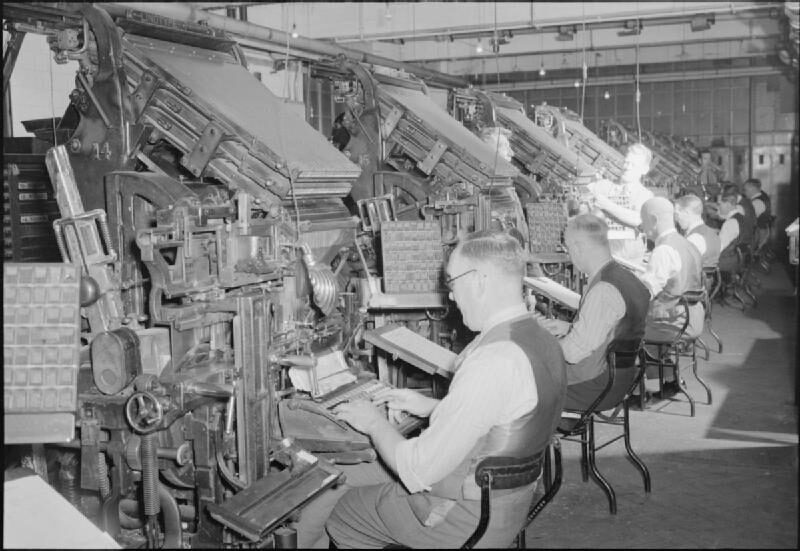
The age of Post-journalism
An eminent expert in media studies, Andrey Mir, sees this age as the “age of Post-journalism” – an age gone far beyond the traditional sense of journalism.
The author of Postjournalism and the Death of Newspapers, Mir suggests that “many people deem the Internet a dump. And it is a dump, at least in terms of dropping any and all content. Anyone can post anything, with no selection or fact-checking”. (“Will journalism survive the internet?”, www.human-as-media.com, Andrey Mir, 1 December 2021)
Although a great proponent of this trend, Mir’s analysis of this growing trend, where every person who owns a smartphone has become a news outlet with no editorial values, is interesting.
“No journalism specialization remains untouched by the Internet,” says Mir in an interview.
“Let’s take breaking news and reporting on the scene. The first thing a person does when seeing something noteworthy – something newsworthy – is take a picture and post it with a comment on social media. It’s not an opportunity anymore, it’s the duty of any smartphone owner, as everybody needs a response from others. It’s their need for social grooming, or what Hegel would call the ‘struggle for recognition’.” (Ibid)
We share Mir’s optimism in that this situation will eventually evolve into something more pragmatic, and its unethical aspects will be polished up, but the situation as it stands right now, is not an ideal one – no ethics, no values, no regulation and no defined purpose.
The Fifth Khilafat and social media
It is interesting to note that the Khilafat of Hazrat Mirza Masroor Ahmadaa, Khalifatul Masih V and social media platforms emerged at roughly the same time – the dawn of the 21st century and the new millennium. Although the Internet had become a well-established form of speedy communication, social media, as we know it, had only started to set its foot in the 21st century.
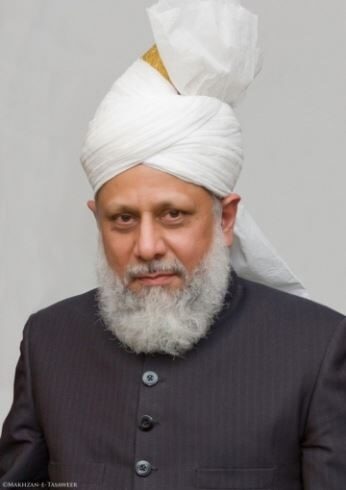
Hazrat Khalifatul Masih Vaa, who is very well-informed and a user of modern technology, kept a very keen eye on the developments in this field. As communication platforms began to emerge and merge in what was to take the collective name of social media, Hazrat Khalifatul Masih Vaa took them on for the propagation of Islam.
Any new arrival in this arena, he has it assessed and tested to ensure that it works well in the noble cause of Islam and has his teams develop it according to the need. This venture of employing modern means for the service of Islam is as interesting as it has been beneficial for mankind.
While www.alislam.org had always been at the forefront of making the Holy Quran easily accessible to Internet users, the developments of applications to make search and research on the Holy Quran easier is a great breakthrough that has happened under direct instruction and guidance of Hazrat Mirza Masroor Ahmad, Khalifatul Masih Vaa.
Translations of the Holy Quran in many languages of the world are also available with a single click through these apps, making it even more convenient for everyone to access and understand the message.
The availability of already existing newspapers and periodicals of the Jamaat on applications and social media platforms is another gift of Hazrat Khalifatul Masih Vaa to the whole world. Some newspapers and journals have been launched in this blessed era of Hazrat Khailfatul Masih Vaa directly, and in some cases solely, on social media apps and the Internet. The message of Islam, the only saviour of the world, is dished out through these platforms.
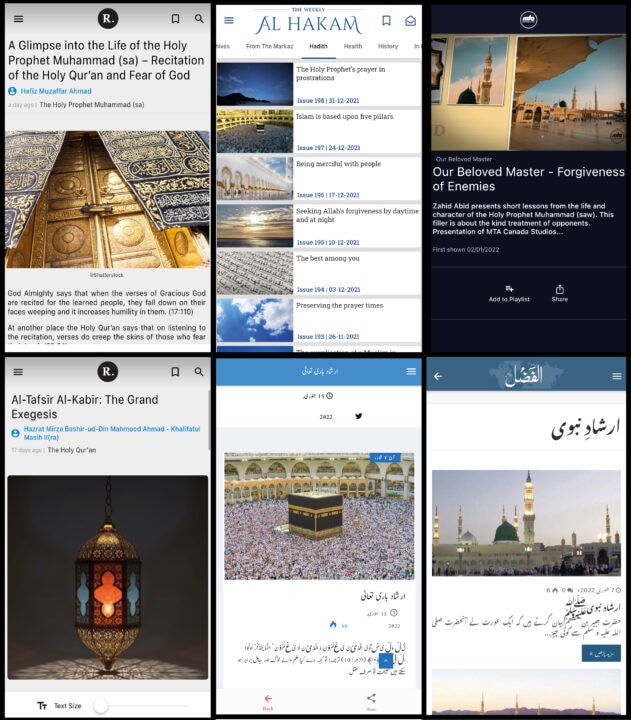
Every word of Hazrat Khalifatul Masihaa now reaches the corners of the earth through social media. Whenever Islam is under attack (which is quite a common occurrence now), one of the first responses is always from Hazrat Khalifatul Masih Vaa, which is transported within seconds to every part of the world – the best narrative to define, describe and defend Islam.
Any atrocities carried out in the name of Islam, and the Ahmadiyya social media is filled with the message of the Holy Prophetsa of Islam, as presented to the modern world by the Promised Messiahas and as disseminated widely through Hazrat Khalifatul Masih Vaa.
MTA, once only available via satellite, has not only multiplied into many more channels, but every single one of them is available through MTA applications, thus always in the palm of one’s hand, ready to be accessed.
It would be unjust not to mention our opponents here. What have they done in this age of social media? Well, they have used every platform, as usual, to try and stop the Jamaat in its steps.
As the Jamaat continues to use all available means of communication technology, they follow the Jamaat and try to bring it down. They all unite – hypocrites, apostates and full-time opponents – as they always have and tell everyone not to believe what the Ahmadiyya Muslim Jamaat says. It is a lot of effort so there must be some gain out of this. Yes, they have made some petty gains. For instance, dedicating their social media accounts to spread hate against the Ahmadiyya Muslim Jamaat and having it monetised in the process, has provided a means of livelihood for many.
By the grace of Allah the Almighty, the Ahmadiyya Muslim Jamaat has used the most modern technology for the propagation of Islam. What have our opponents done? It is all there for anyone to go and see for themselves. We rest our case.


May Allah bless Ahmadiyya Jamaat.
خوش اومديد جامعه، عاشق مرور اين شدم
نوشته متعجب شدم. يه وبسايت خبري
بينقص پيدا كردم كه خبرهاش جذاب و
موثقه. اگه دنبال اخبار
جذاب هستي، نگاه كن.